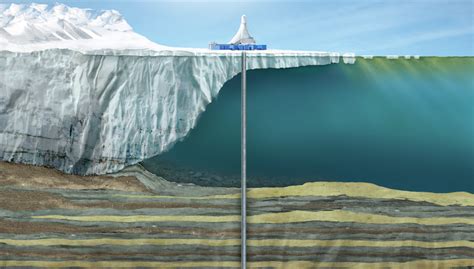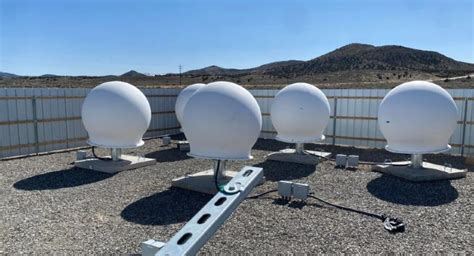
A surprising discovery beneath the Antarctic ice has revealed an unexpected ecosystem teeming with life, challenging previous assumptions about the continent’s frozen depths. During a drilling expedition, scientists encountered a “creature feature” – a vibrant community of organisms clinging to a rock on the seabed, far from sunlight and any known food source, upending established notions of life in extreme environments.
Scientists were stunned by the discovery, which occurred hundreds of miles from the open sea. The team, drilling through 900 meters of ice, deployed a camera to explore the seabed when they came across the unexpected life. “We were just jumping up and down,” said Dr. Huw Griffiths, a biogeographer with the British Antarctic Survey, in an interview. “It’s slightly bonkers.”
The finding, detailed in the scientific community, prompts urgent questions about how these organisms survive in such a harsh environment and what other undiscovered ecosystems may exist beneath the Antarctic ice. This accidental find has opened up new avenues for research, prompting scientists to rethink the potential for life in extreme environments and the interconnectedness of Antarctic ecosystems.
The unexpected colony included sponges and potentially several previously unidentified species, challenging the prevailing understanding of Antarctic biodiversity. These creatures were found attached to a rock on the seabed. Their presence suggests that the ecosystem is more complex and resilient than previously believed, raising significant questions about the source of their sustenance and how they colonized such a remote location.
The unexpected discovery highlights the importance of continued exploration and research in Antarctica, which remains one of the least explored regions on Earth. Further investigation will be critical to understanding the full extent of this hidden ecosystem and its implications for our understanding of life on our planet.
The team’s finding suggests that the Antarctic seabed may be more biodiverse than previously thought and that more research needs to be done to fully understand the continent’s unique ecosystems. The discovery has prompted scientists to reconsider their assumptions about life in extreme environments and to explore new avenues of research.
More Details on the Discovery
The unexpected discovery occurred during a routine drilling expedition aimed at exploring the geology of the Antarctic seabed. The team, using specialized equipment, drilled through approximately 900 meters (nearly 3,000 feet) of ice to reach the ocean floor. As part of their standard procedure, they deployed a camera to survey the area and assess the seabed conditions.
It was during this underwater survey that the team stumbled upon the vibrant community of organisms clinging to a rock. The images transmitted back to the surface revealed sponges, and other unidentified species, all thriving in the dark and frigid environment.
Dr. Griffiths emphasized the unexpected nature of the find, highlighting that their initial objective was purely geological. The discovery of life was a complete surprise, prompting the team to immediately shift their focus to understanding the biological implications of their find. The team will now work to identify the species in the colony.
Implications for Understanding Life in Extreme Environments
The discovery has significant implications for our understanding of life in extreme environments. Previously, scientists believed that life in such remote and dark locations would be scarce, relying on food sources transported from the surface or nearby areas. However, the thriving community of organisms found beneath the Antarctic ice challenges this assumption.
One of the key questions raised by the discovery is how these organisms obtain their energy and nutrients. In the absence of sunlight, photosynthesis is not possible, and the organisms cannot rely on primary production like plants and algae. Scientists speculate that they may be utilizing chemosynthesis, a process in which organisms derive energy from chemical reactions. The organisms could be feeding on chemicals released from the rock on the seabed or relying on a food source that is transported from a distant location.
Another question is how the colony was established in such a remote location. The organisms may have colonized the area through a process called dispersal, where larvae or other propagules are transported by ocean currents from other areas. However, the distance to the nearest known source of similar organisms is considerable, raising questions about the effectiveness of this dispersal mechanism.
The Antarctic discovery is not the first instance of life being found in unexpected places. Scientists have previously discovered thriving ecosystems in deep-sea hydrothermal vents, where organisms rely on chemical energy from the Earth’s interior. These findings have expanded our understanding of the potential for life to exist in a wide range of extreme environments.
Broader Context of Antarctic Research
The discovery also underscores the importance of continued research in Antarctica. The continent remains one of the least explored regions on Earth, and its vast ice sheets and remote location make it a challenging environment for scientific investigation.
Antarctica plays a crucial role in the global climate system. Its ice sheets contain a significant portion of the world’s fresh water, and melting ice can contribute to sea-level rise. The continent’s unique ecosystems are also home to a diverse range of species, many of which are found nowhere else on Earth.
Scientists are conducting research in Antarctica to understand the continent’s geology, climate, and biology. They are using a variety of tools and techniques, including drilling, remote sensing, and underwater exploration. The data they collect is helping us to better understand the Earth’s past, present, and future.
The Antarctic Treaty System, established in 1959, governs international relations in Antarctica. The treaty promotes scientific research and prohibits military activities on the continent. It also establishes a framework for environmental protection and resource management.
Future Research Directions
The discovery of the hidden ecosystem beneath the Antarctic ice has opened up new avenues for research. Scientists are planning future expeditions to investigate the area in more detail. These expeditions will likely involve collecting samples of the organisms, analyzing their DNA, and studying their physiology.
Researchers are keen to use the data from the discovery to determine what kind of impact climate change may have on these creatures and their environment.
One of the goals of future research will be to identify the species found in the colony and to determine their evolutionary relationships. DNA analysis can provide clues about the origins of the organisms and how they are related to other species found in different parts of the world.
Another goal is to understand how the organisms obtain their energy and nutrients. Scientists will be studying the chemical composition of the water and sediments in the area to identify potential food sources. They will also be examining the tissues of the organisms to determine what they are eating.
Researchers are also interested in studying the physical environment of the colony. They will be measuring the temperature, salinity, and oxygen levels in the water, as well as the composition of the seabed. This information will help them to understand the conditions under which the organisms can survive and thrive.
The discovery of the hidden ecosystem beneath the Antarctic ice is a reminder that there is still much to learn about our planet. Continued exploration and research are essential for understanding the Earth’s biodiversity, climate, and geology.
Quotes from Scientists
“We were just jumping up and down,” said Dr. Huw Griffiths, a biogeographer with the British Antarctic Survey. “It’s slightly bonkers.”
“The questions are; how did they get there? What are they eating? How long have they been there?” Griffiths said.
“To find this relatively rich assemblage of life attached to a boulder in the middle of nowhere is a complete surprise,” said Dr. James Smith, a marine biologist who was not involved in the discovery.
Expanded Context and Background Information
Antarctica, the southernmost continent, has long been considered one of the most extreme and inhospitable environments on Earth. Its vast ice sheets cover approximately 98% of its landmass, and temperatures can plummet to well below freezing for extended periods. Despite these harsh conditions, Antarctica is home to a diverse range of life, including penguins, seals, whales, and a variety of invertebrate species.
The discovery of the hidden ecosystem beneath the Antarctic ice challenges our understanding of the distribution and abundance of life in these extreme environments. It suggests that there may be many more undiscovered ecosystems hidden beneath the ice, waiting to be explored.
The Antarctic ice sheet is not uniform in thickness or structure. In some areas, it is thousands of meters thick, while in others, it is relatively thin. The ice sheet also contains a network of subglacial lakes and rivers, which are bodies of water that lie beneath the ice.
These subglacial lakes and rivers are thought to play a role in the dynamics of the ice sheet. They can lubricate the base of the ice, allowing it to flow more easily. They can also transport heat and nutrients, which can affect the distribution of life in the ice sheet.
The discovery of life in a dark, cold environment such as under the Antarctic ice is not entirely unprecedented. Scientists have found similar ecosystems in other extreme environments, such as deep-sea hydrothermal vents and caves. These ecosystems are typically supported by chemosynthesis, a process in which organisms derive energy from chemical reactions rather than sunlight.
Hydrothermal vents, for example, are found in volcanically active areas of the ocean floor. They release hot, mineral-rich fluids that support a variety of organisms, including bacteria, tube worms, and crustaceans. These organisms have adapted to live in the dark, hot, and chemically extreme conditions of the vents.
Caves are another example of extreme environments that can support life. Caves are typically dark, humid, and nutrient-poor, but they can also contain unique ecosystems. Cave organisms, such as bats, insects, and fungi, have adapted to live in these conditions.
The discovery of the hidden ecosystem beneath the Antarctic ice is a reminder that life can be found in even the most unexpected places. It highlights the importance of continued exploration and research in extreme environments to better understand the diversity and resilience of life on Earth.
The Role of Technology in the Discovery
The discovery of this Antarctic ecosystem was made possible by advancements in drilling and underwater imaging technology. These technologies allowed scientists to penetrate the thick ice sheet and explore the seabed in a way that was previously impossible.
The drilling equipment used in the expedition was specifically designed to drill through thick ice without contaminating the environment. The drill used a hot water jet to melt the ice, creating a borehole through which the camera and other instruments could be lowered.
The underwater camera was equipped with high-resolution optics and lights, allowing scientists to capture detailed images of the seabed. The camera was also designed to withstand the extreme pressure and temperature conditions of the deep ocean.
The combination of these technologies allowed scientists to explore a previously inaccessible environment and make a remarkable discovery that has profound implications for our understanding of life on Earth.
Potential Threats to the Antarctic Ecosystem
The Antarctic ecosystem is facing a number of threats, including climate change, pollution, and overfishing. Climate change is causing the ice sheets to melt at an accelerated rate, which can lead to sea-level rise and changes in ocean currents. Pollution, such as plastic waste and chemical contaminants, can harm wildlife and disrupt the food chain. Overfishing can deplete fish stocks and disrupt the balance of the ecosystem.
The discovery of the hidden ecosystem beneath the Antarctic ice highlights the importance of protecting this fragile environment from these threats. Further research is needed to understand the potential impacts of these threats on the Antarctic ecosystem and to develop strategies for mitigating them.
International Cooperation in Antarctic Research
Antarctic research is a collaborative effort involving scientists from many different countries. The Antarctic Treaty System provides a framework for international cooperation in Antarctica, promoting scientific research and environmental protection.
The treaty establishes a number of principles, including the freedom of scientific investigation, the prohibition of military activities, and the protection of the Antarctic environment. It also establishes a system for resolving disputes among treaty parties.
International cooperation is essential for addressing the challenges facing the Antarctic ecosystem. By working together, scientists from different countries can share their knowledge and resources to better understand and protect this unique and important environment.
5 Frequently Asked Questions (FAQ) Related to the News
Q1: What exactly was discovered under the Antarctic ice?
A1: Scientists discovered a thriving ecosystem of organisms, including sponges and potentially previously unidentified species, attached to a rock on the seabed approximately 900 meters (nearly 3,000 feet) beneath the Antarctic ice. This unexpected “creature feature” was found far from sunlight and any known food source, challenging previous assumptions about life in such extreme environments.
Q2: How did the scientists make this discovery?
A2: The discovery was made during a routine drilling expedition aimed at exploring the geology of the Antarctic seabed. After drilling through the ice, the team deployed a camera to survey the area and assess seabed conditions. It was during this underwater survey that they stumbled upon the vibrant community of organisms.
Q3: What implications does this discovery have for our understanding of life in extreme environments?
A3: The discovery suggests that life can exist in places previously thought to be uninhabitable. It raises questions about how these organisms obtain energy and nutrients in the absence of sunlight and how they colonized such a remote location. It also highlights the potential for undiscovered ecosystems in other extreme environments on Earth and potentially on other planets.
Q4: What are the biggest questions scientists are trying to answer now?
A4: The key questions scientists are trying to answer include:
- How did these organisms get there?
- What are they eating?
- How long have they been there?
- What is the true extent of this ecosystem?
- How will climate change and other environmental stressors affect this ecosystem?
Q5: How does this discovery impact future research in Antarctica?
A5: This discovery underscores the importance of continued exploration and research in Antarctica. It opens up new avenues for research, prompting scientists to reconsider their assumptions about life in extreme environments and to explore new strategies for investigating the continent’s unique ecosystems. Future expeditions are planned to further investigate the area, collect samples, analyze DNA, and study the physiology of the organisms to gain a deeper understanding of this hidden ecosystem.









